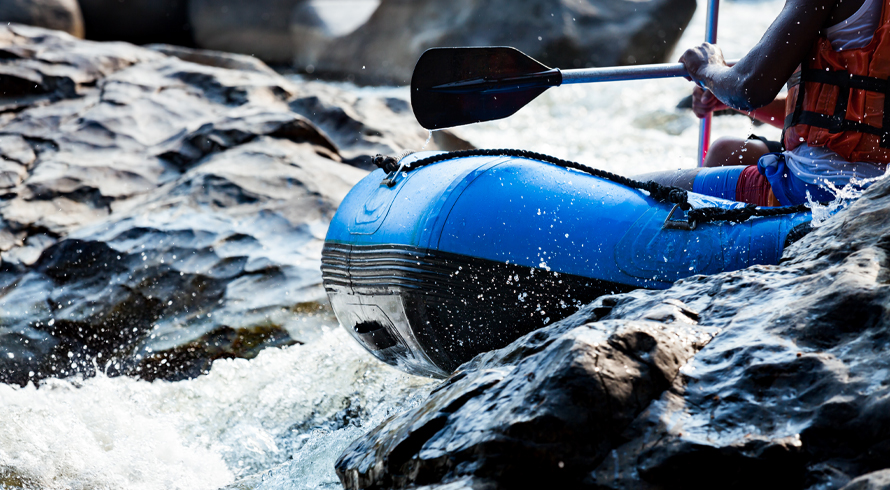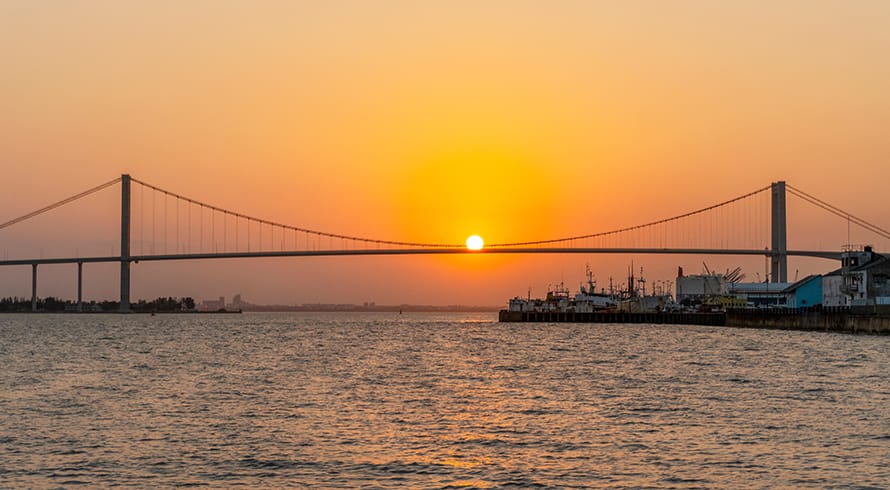Draft Regulations relating to water use licences for onshore unconventional oil and gas exploration and production published for public comment
The Draft Regulations must be read against the background of certain legal developments that underpin the onshore unconventional oil and gas exploration and production regulatory framework.
Background
In 2015, the Minister of the Department of Water and Sanitation (as the DHSWS was known as at the time) declared the exploration and/or production of onshore naturally occurring hydrocarbons that requires stimulation, including but not limited to hydraulic fracturing and or underground gasification as a controlled activity in terms of section 38(1) of the NWA. Such declaration allows the Minister to regulate these declared activities that have a detrimental impact on water resources, as is now seen with the Draft Regulations.
Earlier that same year and in respect of hydraulic fracturing specifically, the then Minister of Mineral Resources published the 2015 Regulations for Petroleum Exploration and Production (Petroleum Regulations) on 3 June 2015, which introduced regulations relating to onshore exploration and production operations in respect of shale gas operations involving hydraulic fracturing. However, the Petroleum Regulations were set aside by the Supreme Court of Appeal (SCA) in July 2019, as they were ultra vires the Minister of Mineral Resources’ competence, dealing with prescribed standards and practices to ensure safe exploration and production of petroleum, including requirements for environmental impact assessments and management of water, waste, pollution incidents and air quality. The SCA’s decision has left a lacuna in our law in respect of the regulation of hydraulic fracturing. As such, the Draft Regulations are welcomed, but is one piece of a much larger legal puzzle.
It is therefore also necessary to mention the interrelatedness of the Draft Regulations within the broader regulation of the environmental impacts of exploration for shale gas by hydraulic fracturing. The NWA is a specific environmental management Act under the National Environmental Management Act 107 of 1998 (NEMA). On 13 November 2020, proposed amendments to the NEMA Environmental Impact Assessment Regulations and Listing Notices were published for public comment, which amendments include hydraulic fracturing as a listed activity requiring environmental authorisation prior to commencement of such activities.
We therefore anticipate that:
- further regulations will be published under NEMA, which deal with the additional aspects of exploration and production operations for unconventional oil or gas development; and
- any potential regulations under NEMA will include those aspects dealt with in the now set aside Petroleum Regulations that are not addressed by the Draft Regulations.
The Draft Regulations also form part of the ongoing transition to the One Environmental System (OES), which is intended to streamline the licensing processes for environmental authorisations and water uses of prospecting, exploration, mining and production operations. The implementation of the OES resulted in the repeal of all environmental aspects from the Mineral and Petroleum Resources Management Act 28 of 2002 (MPRDA) and stripped the Minister of Mineral Resources and Energy of the power to make regulations pertaining to environmental aspects relating to exploration and/or production, although the Minister of Mineral Resources and Energy is the competent authority to grant environmental authorisations for exploration and production activities under NEMA.
The Draft Regulations
The Draft Regulations prescribe that no person may conduct, inter alia, hydraulic fracking onshore without first obtaining a WUL. Whilst the Petroleum Regulations were silent on the duration of a WUL during exploration operations, the Draft Regulations provide that a WUL during exploration may not exceed a period of nine years. On the contrary, exploration operations, under the draft Upstream Petroleum Resources Development Bill, which was published in 2019, may be conducted for up to 11 years. This inconsistency may result in a holder being unable to conduct exploration operations once the water use licence has expired. We do not believe this could have been the intention of the drafters and clarification during the comment period should be sought in relation to the inconsistent prescribed time limitations and whether extension of the WUL is possible.
In the event that the applicant for a WUL for production has not complied with the conditions of his or her WUL during exploration, an application for a WUL may be declined for purposes of production, until such time as the non-compliance has been remedied. In addition to this, Regulation 5(3) of the Draft Regulations grants the responsible authority the power to decline a WUL during production “based on unsatisfactory performance on other licenced areas”. It is unclear whether the Draft Regulations refers to the unsatisfactory performance of the specific holder of the WUL during exploration ‘on other licenced areas’, or whether the discretion will extend to unsatisfactory performance of other holders in other licenced areas in the Republic of South Africa. The latter scenario would result in an application for a WUL being declined, due to no fault on the part of the applicant. This regulation would therefore benefit from clarification by the drafters.
Furthermore, Regulation 5(4) of the Draft Regulations states that a WUL will lapse, should production not commence within six months after the issuance of the WUL. This deadline is particularly short if one considers the significant preparation required in respect of production operations. It is therefore likely that the WUL will lapse prior to commencement of production, and holders will be obligated to re-apply for such licence.
Regulation 6 (which appears to be aligned with section 54 of the NWA regarding the suspension and withdrawal of entitlements to use water) relates to the suspension and withdrawal of a WUL issued in terms of the Draft Regulations under certain circumstances, including where the responsible authority has reason to believe that the WUL was obtained through fraud, non-disclosure of material information or misrepresentation of a material fact. Suspension can be either proposed or with immediate effect, and in the instance of immediate effect would mean operations would need to cease until the matter around the suspension is resolved. A holder of a WUL will have an opportunity to make representations, following which the responsible authority can uphold or withdraw the suspension. In respect of the possibility to appeal a decision to suspend or withdraw a WUL, the Draft Regulations are silent. Furthermore, although Regulation 6 does mimic section 54 of the NWA, the NWA prescribes a restricted list in respect of matters that can be taken on appeal to the Water Tribunal, which includes only suspension and withdrawal decisions made under section 54 and at present, not the Draft Regulations.
The Petroleum Regulations contained a list of areas where controlled activities, such as hydraulic fracturing operations, could not take place. The Draft Regulations provides for a similar list under Regulation 7. However, whereas the Petroleum Regulations had different distances ascribed to the specific areas, the Draft Regulations makes provision for one distance, which will apply to all prohibited areas. The Draft Regulations provide that no controlled activity may occur within 5 kilometres of:
- the edge of an existing or proposed municipal wellfield, including its aquifer; water supply borehole and/or groundwater supply infrastructure;
- any town without a wellfield as future water source areas;
- any government waterworks including dams with a safety risk;
- the edge of any identified strategic water source area; and
- the edge of a thermal or cold spring including seismically active springs.
Furthermore, the Draft Regulations prohibits several activities, including but not limited to (i) the disposal of drill cuttings containing radioactive substances; (ii) deep well injection of process water for disposal without authorisation; (iii) the storage of process water containing radioactive substances, for reuse or disposal in pits or pollution control dams, (iv) the disposal of sludge at a landfill that is not suitably engineered or authorised to accept such waste and (v) the abandonment of wells without decommissioning, as set out in Regulation 8.
These prohibited activities, however, are focused on those activities involving the use of water, and do not address, inter alia, the management of waste during exploration and production generally, as initially prohibited in the Petroleum Regulations. We therefore anticipate that a further list of prohibited activities will be published under NEMA and potentially the National Environmental Management: Waste Act 59 of 2008 in relation to the management of waste generated by these activities.
Regulation 9 of the Draft Regulations goes on to prohibit the use of hazardous substances in drilling fluids or as additives to fracturing fluids and introduces approval and disclosure requirements. The applicant for a WUL will be required to submit a list of all chemicals planned for use in the fracturing fluids to the DHSWS for approval. The approved list of chemicals will then need to be published on the holder’s website. Additionally, Regulation 10 of the Draft Regulations obliges holders to ensure that the WUL is made available, for access and copying on site, to anyone who requests a copy thereof. The Draft Regulations also broadens the disclosure obligation of the holder and requires holders to publish specific information on its website. The information required to be published includes the relevant hydro census, baseline and monitoring information; the risk analysis information and environmental impact assessment; the hydraulic fracturing programme; the fracturing fluids and its chemical composition; the location of all wells and monitoring boreholes and well integrity information, verified by an independent auditor or specialist and audit reports as specified in the licence.
As is evident from our discussion above and owing to their focus on water use, management and protection, there are many aspects not addressed by the Draft Regulations, which were previously addressed by the Petroleum Regulations, such as environmental impact assessments, well designs and construction, operations and management of such operations, well suspension and decommissioning. We therefore eagerly await the regulations to be published under NEMA, which are anticipated to address the broader environmental related impacts and aspects not addressed by the Draft Regulations.
Any person wishing to comment on or make written representations on the Draft Regulations, have until 7 June 2021 to do so, using the below details:
By Post to:
The Director-General
Department of Water and Sanitation
Private Bag X313
Pretoria, 0001
By hand to:
The Director-General
Department of Water and Sanitation
Sedibeng Building, 185 Francis Baard Street
Pretoria, 0001
Email:
unconventionalgas@dws.gov.za
The information and material published on this website is provided for general purposes only and does not constitute legal advice. We make every effort to ensure that the content is updated regularly and to offer the most current and accurate information. Please consult one of our lawyers on any specific legal problem or matter. We accept no responsibility for any loss or damage, whether direct or consequential, which may arise from reliance on the information contained in these pages. Please refer to our full terms and conditions. Copyright © 2025 Cliffe Dekker Hofmeyr. All rights reserved. For permission to reproduce an article or publication, please contact us cliffedekkerhofmeyr@cdhlegal.com.
Subscribe
We support our clients’ strategic and operational needs by offering innovative, integrated and high quality thought leadership. To stay up to date on the latest legal developments that may potentially impact your business, subscribe to our alerts, seminar and webinar invitations.
Subscribe


